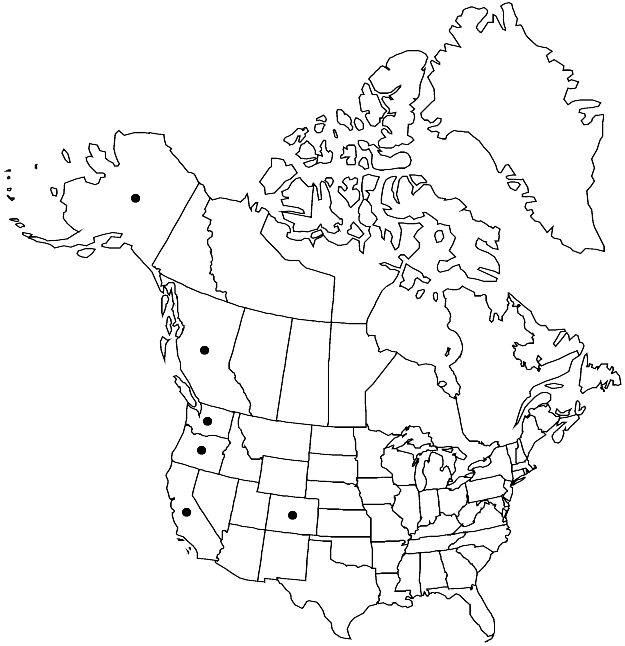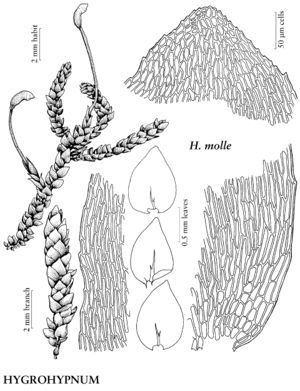Hygrohypnum molle
Moosfl. Harz., 320. 1903.
Plants soft, yellowish or olive green. Stems to 10 cm, leafy throughout, irregularly branched; hyalodermis absent, epidermal-cells small, walls thick, similar to subadjacent cortical cells, central strand present. Leaves loosely imbricate, straight, young branch leaves slightly twisted at apex when dry, otherwise leaves little different when dry or moist, broadly ovate, rarely ovate to almost orbicular, shallowly to deeply concave, (0.8–) 1–1.7 (–2) × (0.6–) 0.7–1.2 (–1.3) mm; margins plane, entire, undulating or finely denticulate distally, especially in apex; apex gradually tapered to acute, blunt tip; costa usually double and short, arms slender, one reaching mid leaf or just beyond; alar cells few, quadrate, short-rectangular, or irregular, region not or scarcely differentiated; basal laminal cells longer than medial cells, walls slightly more incrassate, pits few or absent; medial cells rhomboid to linear-flexuose, (24–) 32–52 (–74) × (3–) 5–6 (–8) µm; apical cells similar to medial cells; marginal cells 30–60 µm, rarely reaching 60 µm. Sexual condition autoicous; perigonia and perichaetia not in bracted complex; perichaetial inner leaves with margins plane, coarsely denticulate, some apical cells papillose abaxially by over-riding distal end walls. Seta orangish red, reddish-brown, or deep maroon, 0.6–1.5 cm. Capsule with endostome cilia rudimentary or absent.
Habitat: Irrigated or seepy acidic rock in or along montane streams
Elevation: moderate to high elevations (600-3300 m)
Distribution

B.C., Alaska, Calif., Colo., Oreg., Wash., Europe
Discussion
Hygrohypnum molle has been much confused with H. bestii and H. duriusculum, less so with H. alpinum. The essential features of H. molle are the undifferentiated alar cells and broadly ovate, distinctly concave leaves, which taper to an acute, blunt, slightly denticulate apex. In addition, the leaves are essentially straight and loosely imbricate, little differing moist or dry. The stems are procumbent with widely spaced branches that are often as long as the stems.
Selected References
None.
Lower Taxa
"narrower" is not a number.
